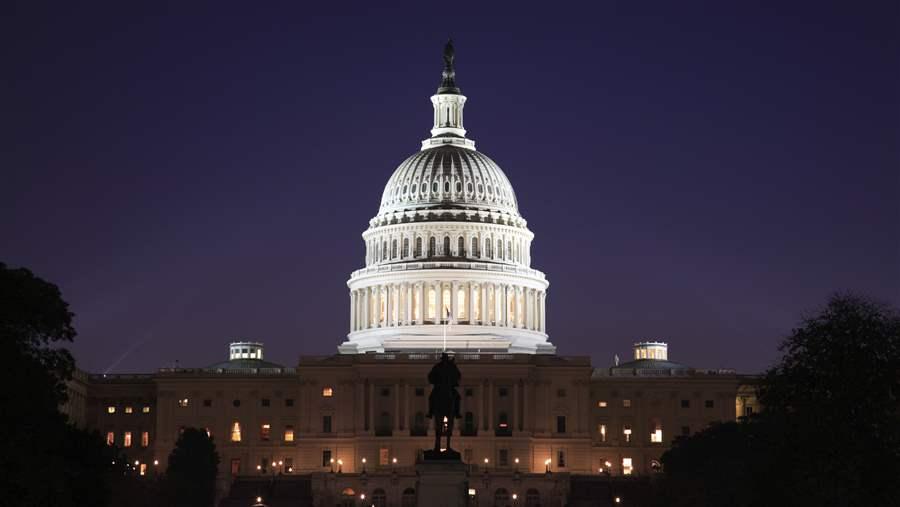Congress Should Study the States as It Considers Reviving Criminal Justice Reform
31 states have cut crime and imprisonment since 2007
Legislation introduced in the U.S. Senate earlier this month by Senators Chuck Grassley (R-IA), Dick Durbin (D-IL), and others and a hearing expected next month in the House of Representatives are part of a renewed push among lawmakers to improve the federal criminal justice system. As Congress revisits the issue, its efforts should be informed by the experiences of states across the country where far-reaching, bipartisan legislation and new approaches to crime and punishment are protecting public safety and holding offenders accountable while cutting the cost of prisons.
The number of federal prisoners ballooned from 25,000 in 1980 to a high of 220,000 in 2013, driven in large part by higher incarceration rates for drug offenders. Changes adopted by all three branches of government that have begun to prioritize federal prison space for people convicted of more serious and violent offenses have pared that number back to about 185,000 today. Nevertheless, 1 in 2 federal inmates is still a drug offender.
The surge in federal incarceration came at an enormous cost. In fiscal year 2017, taxpayers spent almost as much on federal prisons—about $7 billion—as they did to fund the entire Justice Department in 1980. The Bureau of Prisons budget now accounts for about a quarter of the department’s expenditures, crowding out dollars for the FBI, the Drug Enforcement Administration, federal prosecutors, and crime-fighting initiatives in communities.
Despite this considerable investment, however, the public health and safety return has been weak. Stiffer penalties for drug offenses were intended to dry up the supply of drugs, but today, illicit substances are more widely available, cheaper, and generally more pure than they were three decades ago. And after battling crack cocaine and methamphetamines, the nation now faces the opioid crisis. Further, longer prison terms were supposed to keep people locked up and off the streets and to deter them from committing future crimes when they got out. But that also didn’t work: Federal drug offenders who served shorter sentences under a 2007 U.S. Sentencing Commission directive had lower recidivism rates than those who spent more time behind bars.
In October 2015, Sens. Grassley and Durbin were among a group of senators that introduced the Sentencing Reform and Corrections Act (S. 2123) to improve these outcomes. The bill would have expanded “safety valves”—conditions under which judges could impose sentences below mandatory minimum levels—for those convicted of low-level drug offenses, retroactively reduced penalties for certain crack cocaine offenders sentenced under a system that Congress abolished in 2010, and created a program to let some nonviolent offenders earn time off their prison terms for productive behavior. The Congressional Budget Office estimated that the modest changes in the bill could have saved taxpayers $722 million over 10 years, but after more than a year of negotiation, Congress failed to vote on the legislation.
This inaction stands in stark contrast to a wave of bipartisan, evidence-based criminal justice reforms in the states, many of which go much further than what is under consideration in Washington. Since 2010, 31 states have shown that it’s possible to cut crime and imprisonment at the same time while saving taxpayers billions of dollars. For example:
- In 2007, Texas passed criminal justice reforms that diverted low-level offenders into alternatives to incarceration and established a robust program that allowed them to earn time off their probation for productive behavior. Texas’ reforms led to $3 billion in savings and cut recidivism by 46 percent—all while the crime rate continued to decline.
- Alaska enacted reforms in 2016 that prioritized prison space for the most serious offenses by reducing and eliminating prison sentences for low-level crimes, such as drug possession. The law is expected to avert projected prison growth of 27 percent and reduce the current population by 13 percent, cutting costs by an estimated $380 million. Of that, $98 million will be reinvested in evidence-based programs to reduce recidivism, protect public safety, and improve victims’ services.
- Earlier this year, Louisiana passed the most comprehensive sentencing and corrections reform in its history, potentially enabling it to shed its status as the nation’s most incarcerated state by the end of 2018. The reforms include overhauling drug sentences, eliminating some mandatory sentences, and allowing prisoners to serve shorter terms if they complete programming designed to reduce reoffending. The law represents a broad, bipartisan consensus among legislators, law enforcement, advocates, business, and faith leaders and is expected to avert $262 million in spending over 10 years. Seventy percent of the savings is slated for reinvestment in services to reduce recidivism and support victims.
As Sens. Grassley and Durbin attempt to revive federal criminal justice reform, their colleagues on Capitol Hill would do well to study state efforts. Over the past decade, the laboratories of democracy have been generating valuable lessons for how to secure better public safety results with fewer taxpayer dollars.
Adam Gelb directs The Pew Charitable Trusts’ public safety performance project.







